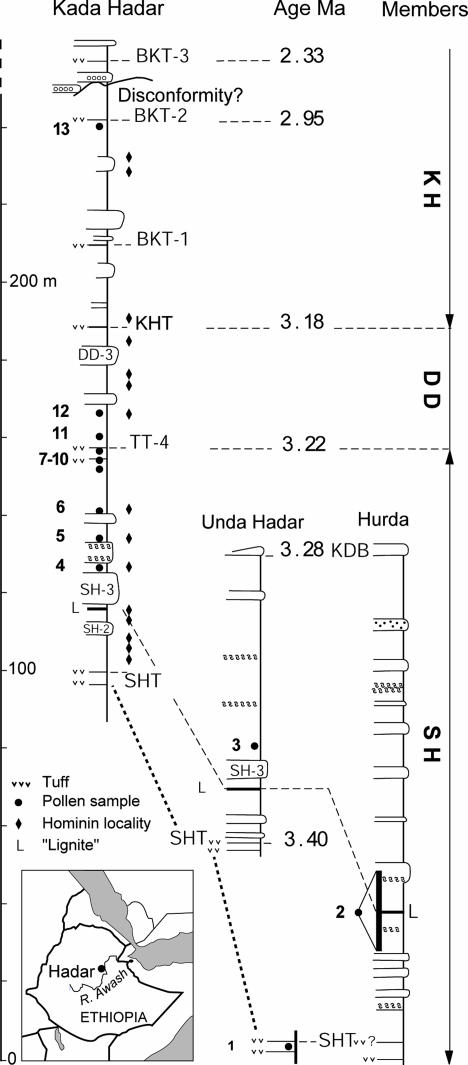Fig. 1.
Location of pollen samples (bold numbers) from the Hadar Formation, according to stratigraphy (14–16), dated tuffs (12, 13), and hominin localities (7–9). 1: clay, 20 cm below SHT, 3.40 mya; 2: lacustrine black clay (L), 20-m section ≈30 m above SHT and ≈80 m below the 3.28 mya KDB, 3.37–3.35 mya; 3: silty clay, 3 m above the top of the SH-3 sand and below the gastropod layer, <3.28 mya; 4: brown clay, 11 m above the base of the SH-3 sand, 3.25 mya; 5: silt, lower contact of pink calcareous marl, 3.25 mya; 6: green clay, below TT-4, 3.24 mya; 7: green clay, below TT-4, 3.23 mya; 8: sandy clay, below TT-4, 3.22 mya; 9: black clay, 50 cm below ostracod layer, 3.22 mya; 10: ostracod clay, below TT-4, 3.22 mya; 11: silt, 2m above TT-4, <3.22 mya; 12: clay, 10 m above TT-4, <3.18 mya; 13: clay, lower contact with BKT-2, 2.95 mya. All ages are interpolated except for samples 1 and 13. Although pollen sampling was systematically done throughout the section, including hominin localities, fossil pollen were preserved only in specific strata.

